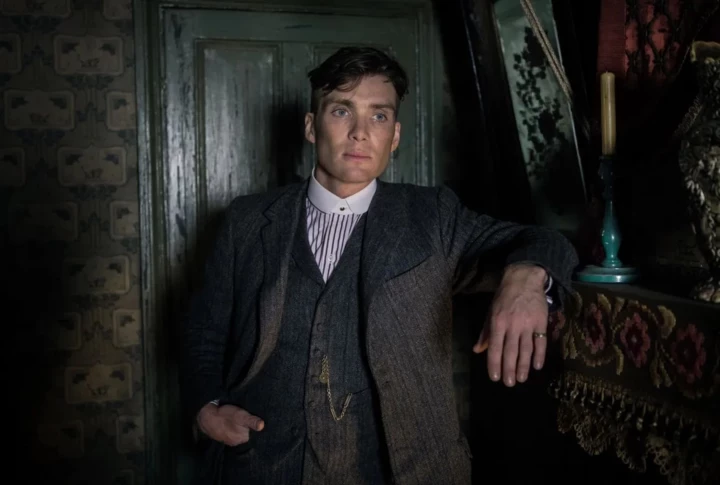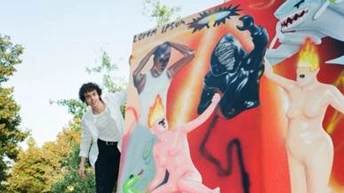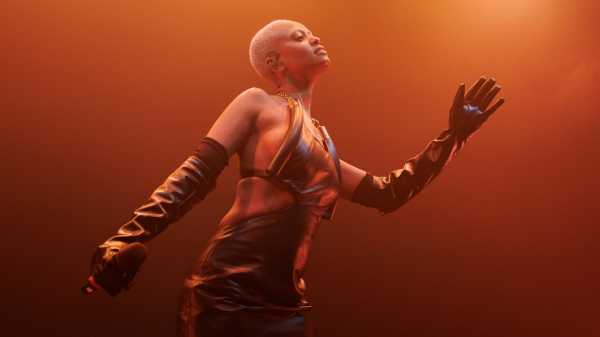
Save this storySave this storySave this storySave this story
Richard Brody
Staff writer
You’re reading the Goings On newsletter, a guide to what we’re watching, listening to, and doing this week. Sign up to receive it in your in-box.
Filmmakers are considered storytellers, but the industry’s golden rule is to show, not tell. One such artist who deftly overcomes this paradox is the prolific South Korean director Hong Sangsoo. He develops sharply contoured yet formally audacious stories—most involving crises in the lives of artists—from the wispiest of premises. Then, working rapidly with scant budgets, he turns them into some of the talkiest movies this side of Wes Anderson, and invests them with dramatic power and confessional candor. Hong’s thirtieth feature, “In Our Day,” opens on May 17, at Film at Lincoln Center. It exemplifies his singular style: in its simplicity, it turns out to be immensely complex, and its modest domesticity touches on matters of life and death.

A still from “In Our Day.”Photograph courtesy Cinema Guild
The movie contains two stories packed into one, about two trios of acquaintances. Sang-won, an accomplished actress who has left the profession, has recently returned to Korea. While staying in the apartment of a middle-aged woman named Jung-soo, Sang-won is visited by her cousin Ji-soo, a young aspiring actress in search of career advice. Meanwhile, an elderly poet named Hong Ui-ju, who’s in ill health, is being filmed at home for a documentary portrait by a student named Ki-joo; during the shoot, a young aspiring actor, Jae-won, comes to see the elder artist, seeking his wisdom. The two fields of action, subtly connected, are intercut throughout, and what emerges from both is a quiet yet furious desperation. Ui-ju’s frozen solitude makes his creative ferment feel vain and his life pointless. As for Sang-won, she repudiates the film industry in a remarkable monologue in which she decries actors’ lack of freedom on movie shoots.
That’s not a problem for actors in Hong Sangsoo’s films. He grants his casts enormous leeway; performers improvise as if on a tightrope, in extremely long takes that offer no chance for cutting within the scene—providing them splendid showcases. One actress who has embraced Hong’s method is Isabelle Huppert, who has made three films with him. The first two—“In Another Country,” and one of his most daring masterworks, “Claire’s Camera,” shot at the 2016 Cannes Film Festival amid its events—are available to stream. The third, “A Traveller’s Needs,” which was completed after “In Our Day” and premièred in February, at the Berlin Film Festival, is still unseen here.
Spotlight
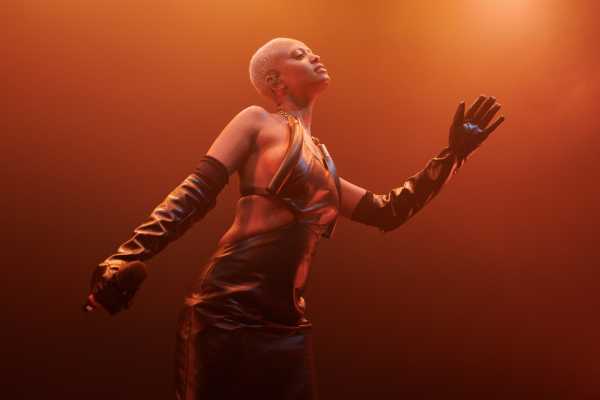
Photograph by Burak Cingi / GettyR. & B.
Kelela, starting with her 2013 mixtape “Cut 4 Me,” has been the mononymous force at the center of an R. & B. mutation, delivering a sleek, sharp-edged upgrade with an embrace of electronic music. She has spent the past decade building upon a reputation as a futurist—from the high-powered début album “Take Me Apart” to last year’s “Raven.” The latter, which ended a five-year hiatus, was inspired by the early-pandemic renewal of the Black Lives Matter movement, which stoked in the artist a desire to, as she put it to Billboard, “create a more liberatory model for myself.” That vision led to a more ambient sound, in pursuit of egalitarian dance-music practices. A remix album, “RAVE:N,” only furthers this fantasy of an all-inclusive club.—Sheldon Pearce (Blue Note; May 28-29.)

About Town
Television
A strange early chapter of reality-television history resurfaces in the Hulu documentary “The Contestant”: in the late nineties, an aspiring young comedian, Tomoaki Hamatsu, thinking he was auditioning for a chance to hitchhike across Africa, was taken to a small Tokyo apartment, instructed to strip, and told that he couldn’t leave until he had garnered a million yen’s worth of magazine prizes. Fifteen months of solitary, naked travails were filmed for a segment of a show, making Hamatsu—whose strikingly long face earned him the nickname Nasubi (Japanese for “eggplant”)—an unlikely celebrity. A quarter century on, Nasubi is still reckoning with the consequences of his confinement, but it’s the story of Nasubi’s post-TV life that elevates “The Contestant” from a chronicle of exploitation to a tale of resilience and reinvention.—Inkoo Kang (Reviewed on 5/2/24.)
Soul
The Queens-raised singer-songwriter Yaya Bey’s voice has a naked honesty that fits her songs of self-guidance and candor perfectly. After three albums of quieter, acoustic musings, she finally broke through, in 2022, with “Remember Your North Star,” a bluesy, grounded soul record about trusting yourself. Her new album, “Ten Fold,” broadens the scope to include a greater range of dance-music forms, drawing from collaborators such as the drummers Corey Fonville, of the jazz group Butcher Brown, and Karriem Riggins. Both groovy and expressive, the music makes more space for cathartic humor amid inner turmoil, leaning into a boogie awakening—upbeat energy that Bey brings to a home-town show in Brooklyn.—S.P. (Elsewhere; May 23.)
Dance
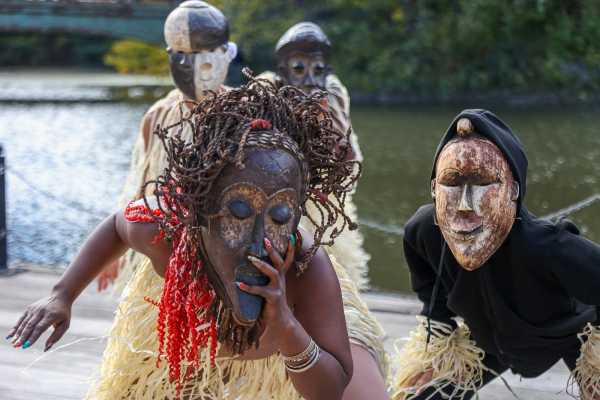
Photograph courtesy Siren – Protectors of the Rainforest
Most years, alongside a bazaar, the honoring of elders, and performances from local groups, BAM’s long-running festival DanceAfrica celebrates the mother continent by zeroing in on a country or region. This time, it’s Cameroon. The guest company was supposed to be Cie la Calebasse, a notable troupe from that nation. But, in a late substitution, Siren – Protectors of the Rainforest, a Brooklyn-based pan-African group, performs instead, leaning into the native traditions of its Cameroonian-born leader, Mafor Mambo Tse. The mighty vocal-and-percussion company Women of the Calabash is also on the bill.—Brian Seibert (Howard Gilman Opera House; May 24-27.)
Television
“Under the Bridge,” a new Hulu crime drama, is based on the real-life murder of a fourteen-year-old Indian Canadian girl named Reena Virk, by her peers, in 1997. The show’s interest lies in the following trial, and in the dynamic between the girls from a local group home, called the Bic Girls for their perceived disposability, and the uncool, middle-class, tragically impressionable Reena (Vritika Gupta). A disaffected Riley Keough plays a fictionalized version of Rebecca Godfrey (the author of the book from which the show is adapted), who is old friends with a policewoman (Lily Gladstone) probing the “schoolgirl murder.” The show is bloated and occasionally preachy, but it’s built on a shrewd, bone-deep understanding of how dopey and dangerous adolescent girls can be.—I.K. (Reviewed in our issue of 5/20/24.)
Off Broadway
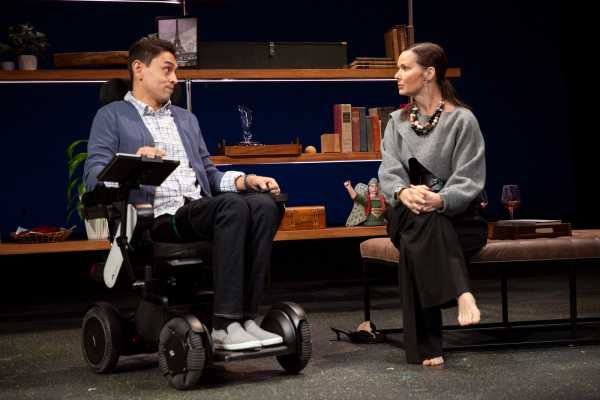
Photograph by Monique Carboni
For all of today’s clamor around diversity, disability is still a term that many people fear to use. The New Group’s play “All of Me,” vividly directed by Ashley Brooke Monroe, has no use for such tentativeness. It tracks a burgeoning romance between two twentysomethings: the reflexively sardonic Lucy (Madison Ferris), who uses a mobility scooter, and the sweet-natured Alfonso (Danny J. Gomez), who uses a power chair. Militating against the match are their overprotective mothers (Kyra Sedgwick and Florencia Lozano, respectively) and socioeconomic tensions. (Lucy is on disability welfare; Alfonso has a trust fund.) Laura Winters’s mercilessly funny script gets even funnier in the hands of Ferris and Gomez, who leverage their physicality as often-ironic counterpoints to the robotic intonations of their augmentative-communication devices.—Dan Stahl (Pershing Square Signature Center; through June 16.)
Movies
Michael Lindsay-Hogg’s 1970 documentary “Let It Be,” presenting the Beatles rehearsing and recording the album of that title in January, 1969, was doomed by circumstances: the band broke up the month before the movie’s release, and as a result it was treated like a preprinted death notice, dour and unsavory. The film was long unavailable, and its outtakes were mined by Peter Jackson for “Get Back,” his three-part, nearly eight-hour 2021 documentary. But the original eighty-one-minute movie, also restored by Jackson and now streaming on Disney+, is the superior work; here, Lindsay-Hogg offers tightly composed, patiently observed scenes of the foursome riffing, working out ideas, musically hanging out. When the Beatles move to the rooftop of their studio—for what would be their last public concert—the screen radiates irrepressible, cheeky joy.—Richard Brody

Pick Three
The cartoon editor Emma Allen shares three amusing things to watch.

1. My job necessitates the consumption of a staggering amount of aspirationally funny stuff—a thousand-plus cartoon submissions each week is just the beginning. So naturally, in my free time, I consume even more comedy. I recently enjoyed “The Feeling That the Time for Doing Something Has Passed,” a film by and starring Joanna Arnow, as an aimless thirty-something in various B.D.S.M.-ish relationships. Writing it inspired Arnow to start drawing single-panel cartoons, and you can see why—the script feels almost like a montage of cartoon captions, with hilariously jarring segues. It makes sense: Arnow’s depiction of casual sadomasochism and cartooning both thrive on trivial humiliation, dryly recounted. I’d love for someone to reverse-engineer a drawing for the line, “Thank you for forgiving me for mansplaining about L.A.”
2. I also saw “The Fall Guy,” which, though it’s not one of my picks, I mention because of my preparatory viewing: Buster Keaton’s stunt-filled “The General.” Ryan Gosling may be the Paul Newman of our era (or so I argued, after two spicy margaritas), but Buster Keaton is the Buster Keaton of all time—no one is funnier when silently almost getting hit by a train.
3. In honor of the hyped new production of “Uncle Vanya,” I then proceeded to rewatch one of my favorite sketches, “Germans Who Say Nice Things,” from the lone, 1996 season of “The Dana Carvey Show.” Russian realism is fine, but can it beat Steve Carrell, in a turtleneck, bellowing, “It was a pleasure babysitting Kevin!”?
P.S. Good stuff on the Internet:
- Fonts hanging out
- Chess club for bad actors
- The fantastical, Proustian imagery in the newest Casey MQ release
Sourse: newyorker.com


